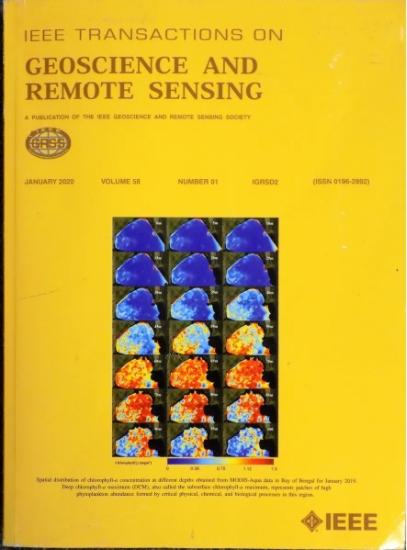DREB-Net: Dual-Stream Restoration Embedding Blur-Feature Fusion Network for High-Mobility UAV Object Detection
IF 7.5
1区 地球科学
Q1 ENGINEERING, ELECTRICAL & ELECTRONIC
IEEE Transactions on Geoscience and Remote Sensing
Pub Date : 2025-02-18
DOI:10.1109/TGRS.2025.3543270
引用次数: 0
Abstract
Object detection algorithms are pivotal components of UAV imaging systems, extensively employed in complex fields. However, images captured by high-mobility UAVs often suffer from motion blur cases, which significantly impedes the performance of advanced object detection algorithms. To address these challenges, we propose an innovative object detection algorithm specifically designed for blurry images, named dual-stream restoration embedding blur-feature fusion network (DREB-Net). First, DREB-Net addresses the particularities of blurry image object detection problem by incorporating a blurry image restoration auxiliary branch (BRAB) during the training phase. Second, it fuses the extracted shallow features via multilevel attention-guided feature fusion (MAGFF) module, to extract richer features. Here, the MAGFF module comprises local attention modules and global attention modules, which assign different weights to the branches. Then, during the inference phase, the deep feature extraction of the BRAB can be removed to reduce computational complexity and improve detection speed. In loss function, a combined loss of mean squared error (MSE) and SSIM is added to the BRAB to restore blurry images. Finally, DREB-Net introduces fast Fourier transform in the early stages of feature extraction, via a learnable frequency domain amplitude modulation module (LFAMM), to adjust feature amplitude and enhance feature processing capability. Compared to the baseline, DREB-Net achieved an approximate 7% increase in both mAP50 and mAR50 across two experimental datasets. Experimental results indicate that DREB-Net can still effectively perform object detection tasks under motion blur in captured images, showcasing excellent performance and broad application prospects. Our source code will be available atDREB-Net:用于高机动无人机目标检测的双流恢复嵌入模糊特征融合网络
目标检测算法是无人机成像系统的关键组成部分,广泛应用于复杂领域。然而,高机动性无人机捕获的图像经常遭受运动模糊的情况,这严重阻碍了先进的目标检测算法的性能。为了解决这些挑战,我们提出了一种专门针对模糊图像设计的创新目标检测算法,称为双流恢复嵌入模糊特征融合网络(DREB-Net)。首先,DREB-Net通过在训练阶段引入模糊图像恢复辅助分支(BRAB)来解决模糊图像目标检测问题的特殊性。其次,通过多级注意引导特征融合(multi - level attention-guided feature fusion, MAGFF)模块对提取的浅层特征进行融合,提取更丰富的特征;在这里,MAGFF模块包括局部关注模块和全局关注模块,它们为分支分配不同的权重。然后,在推理阶段,可以去除BRAB的深度特征提取,以降低计算复杂度,提高检测速度。在损失函数中,在BRAB中加入均方误差(MSE)和SSIM的联合损失来恢复模糊图像。最后,DREB-Net在特征提取的早期阶段引入快速傅立叶变换,通过可学习的频域调幅模块(LFAMM)来调整特征幅度,增强特征处理能力。与基线相比,DREB-Net在两个实验数据集上的mAP50和mAR50都增加了大约7%。实验结果表明,DREB-Net在捕获图像运动模糊情况下仍能有效执行目标检测任务,表现出优异的性能和广阔的应用前景。我们的源代码可以在https://github.com/EEIC-Lab/DREB-Net.git上获得。
本文章由计算机程序翻译,如有差异,请以英文原文为准。
求助全文
约1分钟内获得全文
求助全文
来源期刊

IEEE Transactions on Geoscience and Remote Sensing
工程技术-地球化学与地球物理
CiteScore
11.50
自引率
28.00%
发文量
1912
审稿时长
4.0 months
期刊介绍:
IEEE Transactions on Geoscience and Remote Sensing (TGRS) is a monthly publication that focuses on the theory, concepts, and techniques of science and engineering as applied to sensing the land, oceans, atmosphere, and space; and the processing, interpretation, and dissemination of this information.
 求助内容:
求助内容: 应助结果提醒方式:
应助结果提醒方式:


